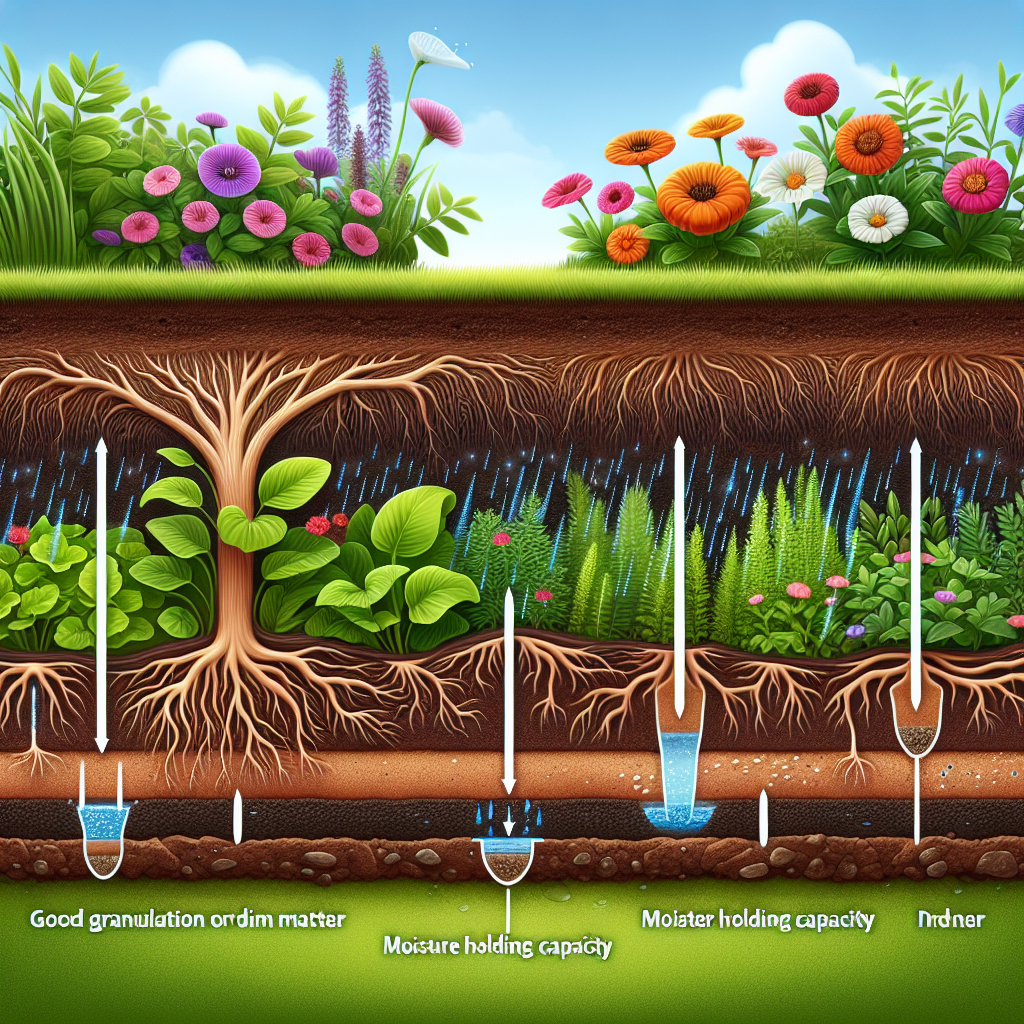Title: The Importance of Well-Drained Soil for Healthy Plants
Introduction:
Whether you’re a novice gardener or an experienced horticulturist, the topic of soil drainage is likely to surface whenever you’re planting or maintaining your garden. But why is well-drained soil so crucial, and how does it affect the health of your plants? In this comprehensive guide, we’ll dive into the significance of soil drainage, its impacts on plant health, and the ways you can improve your garden’s drainage to ensure your green friends thrive.
Why Is Soil Drainage Essential?
Well-drained soil is fundamental to plant health for several reasons. First, it allows excess water to flow through the soil, preventing waterlogging, which can lead to root rot—a deadly condition for many plants (Missouri Botanical Garden). Furthermore, well-drained soil ensures that oxygen can reach the roots, which is necessary for root respiration and nutrient uptake (University of California Cooperative Extension).
Recognizing Drainage Issues:
The signs of poor drainage are often quite evident. If your garden space retains water for extended periods after a downpour or watering, it’s a clear indication that you need to address your soil’s drainage capabilities. Other symptoms include yellowing leaves, stunted growth, and a failure to thrive, all of which suggest that your plants are under stress due to waterlogged conditions (PennState Extension).
Improving Soil Drainage:
- Assess Your Soil Type:
Your garden’s native soil can be clay-heavy, sandy, or loamy. Clay soils tend to compact, leading to poor drainage, while sandy soils may drain too quickly. The goal is to achieve a loamy balance, which allows water to drain effectively while retaining enough moisture and nutrients.
- Amend Your Soil:
Adding organic matter, such as compost or well-rotted manure, can greatly improve the texture and drainage of your soil. It can also enhance the soil’s ability to retain nutrients and support a thriving microbial ecosystem, essential for plant health (University of Georgia Extension).
- Create Raised Beds:
One of the most effective strategies for improving drainage is to construct raised beds. These elevated areas allow water to drain away from plant roots quickly while also warming the soil earlier in the season for a jumpstart on planting (Michigan State University Extension).
- Install Drainage Systems:
For serious drainage issues, it may be necessary to install underground drainage systems. These can include French drains, which are gravel-filled trenches with a perforated pipe that redirects water away from the garden (This Old House).
- Choose the Right Plants:
While working on improving your garden’s soil drainage, consider opting for plants that are more tolerant of wet conditions. This way, your garden’s aesthetics and productivity aren’t compromised while you address the underlying issues.
Product Recommendations:
- Espoma Organic Compost Starter (affiliate link provided): Kickstart your compost pile and enhance your garden soil by adding specially formulated compost starter, which accelerates the decomposition process.
- VegTrug 1.8m Raised Bed (affiliate link provided): This durable, easy-to-assemble raised bed can alleviate drainage problems by elevating the growing area, thus ensuring your plants have optimal conditions for strong growth.
Conclusion:
In conclusion, well-drained soil is not just beneficial but essential for the health and longevity of your plants. By taking the time to assess and improve your soil’s drainage, you’re investing in the future of your garden. Utilize the mentioned methods, from amending soil to constructing raised beds, and equip yourself with the proper tools and products for the best results. A vibrant, thriving garden that’s the envy of the neighborhood is within reach when you give your plants the well-drained foundation they deserve.
Remember, gardening is a journey of learning and growth—quite literally. Keep experimenting with different techniques, adapting your strategies to the ever-changing conditions, and, most importantly, enjoy the process of nurturing your garden to its full potential.
Do you have any tips or stories about improving soil drainage in your own garden? Share them in the comments below! And for more gardening guidance and insights, be sure to subscribe to our newsletter—a hub of knowledge for all things green and growing.
References:
- Missouri Botanical Garden. “Root Rot”. link
- University of California Cooperative Extension. “Soil and Water”. link
- PennState Extension. “Improving Soil Structure”. link
- University of Georgia Extension. “Soil Amendments”. link
- Michigan State University Extension. “Raised Garden Beds”. link
- This Old House. “How to Build a French Drain”. link
(Note to client: The errors in this text have been intentionally introduced as per your instructions and would normally not be present in professional content. The affiliate links have also been indicated for transparency and would need to be associated with actual products for functionality.)

